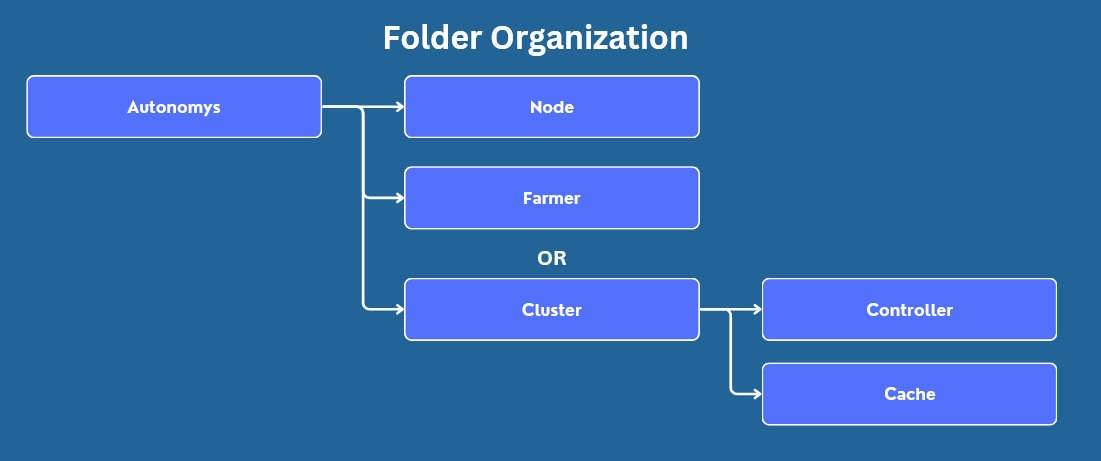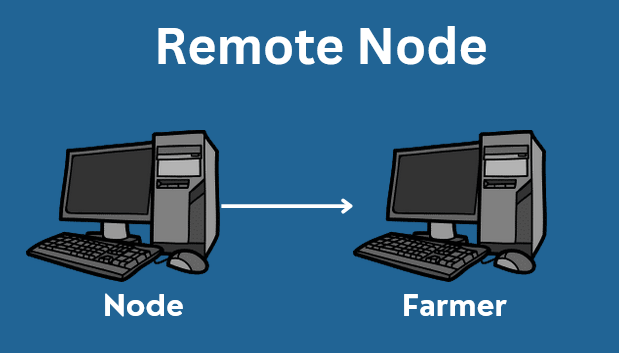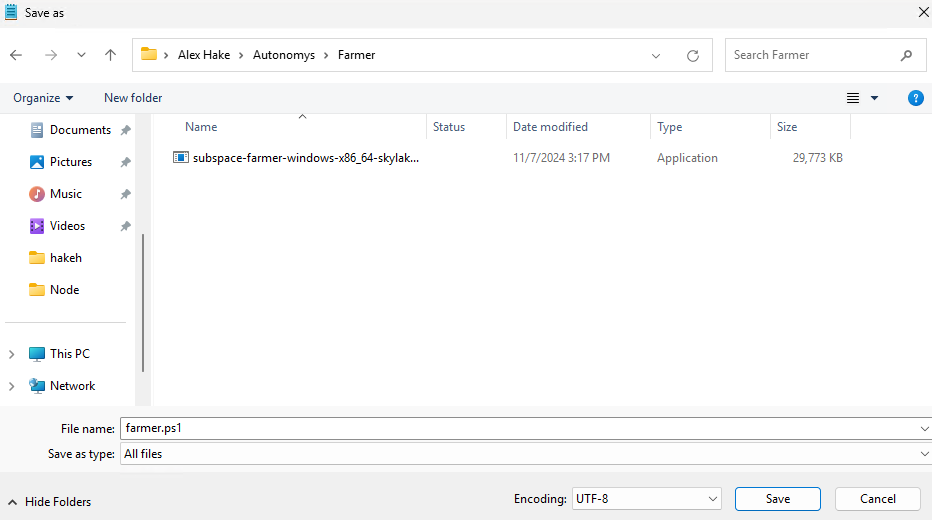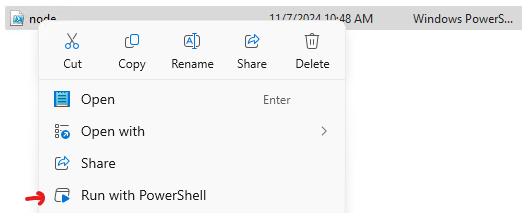Farmer (Non-Cluster)
Prerequisites
- To run a Farmer you must have a Node running
- Prepare Farmer Disks if you have not already
- System requirements must be method
- Check the Official Wiki
- Ports Forwarded
- Check GPU Plotting Requirements
Organization
Organization is subjective, but in this wiki and the following ones this organization structure will be used for the Autonomys components.

Create Farmer Folder
Create the "Autonomys" parent folder if it does not already exist. Then create a subfolder for the "Farmer". The Cluster folder does not need to be created if running a Farmer.
Download the Executable
Latest Release
Navigate to the autonomys/subspace Github. On the right side, click the latest release.
At the time of this wiki, the latest release is mainnet-2024-nov-06 and this version will be used in the examples within this wiki. Ensure that the latest version is downloaded, and the commands below are updated to reference the latest version.
Select Executable
There are a lot of options to choose from on the releases page and it is important to select the correct one. The "Farmer" files are typically located at the top. There are two versions available for windows: "x86-64-v2" and "skylake". Details on which one should be chosen are listed on the release page. If unsure what version to use, it is best to ask in the Discord.
In this wiki subspace-farmer-windows-x86_64-skylake-mainnet-2024-nov-06.exe will be used. Click the asset that corresponds to your setup to download it, then move it to your "Farmer" directory.
Identify Farm Disks
To create the Farmer script the path and size of the disks must be known. In the below image there are two farm disks with a path of Y:\ and Z:\. The size is 127GB each, for my farm I will specify 125GB however there is no requirement to leave any space free.
PowerShell Script
To make managing the executables easier and reduce errors, a powershell script will be used to specify the command line arguments and start the Farmer.
Enable Local Scripts
By default, Windows will block all scripts from being run.

In order to allow scripts created and stored locally to be run the correct Execution Policy needs to be set. Open up a Terminal with Admin priviledges by pressing WIN + x and then selecting "Terminal (Admin)". Then paste in the following code and press enter:
Set-ExecutionPolicy -ExecutionPolicy RemoteSigned
This is generally considered safe as it still blocks scripts downloaded from the internet from being run unless explicitely unblocked. Now close the Terminal as it is no longer needed.
Create the Script
Open up Notepad and paste in the contents of the applicable script below
If your Node and Farmer will be on the same host use the Local Farmer PowerShell Script.

If your Node and Farmer will be on different hosts then use the Remote Farmer PowerShell Script.

Read through the comments to determine if anything needs to be modified. Typically the following will need to be updated:
- If using a Remote Node, make sure the Node IP and Port is set correctly
- Ensure the Prometheus IP & Port are set correctly
- Update the Reward address
- Ensure the
.exefile matches the one downloaded - Update the disks with the appropriate number, path, and size
When ready, click "File" > "Save as". Locate and select the "Farmer" folder created earlier as the save location. Then update the "File name" to farmer.ps1 and select "All files" from the "Save as type" drop down. Then click "Save".

If the file needs to be edited, simply double click the farmer file and Notepad will be opened.
Starting the Farmer
If you try to run the script and you get no error and no output you need to install Microsoft Visual C++ Redistributable. Navigate to Visual C++ Redistributable. In most cases the vc_redist.x64.exe is the right version. Install it and then reboot.
Now that the PowerShell script has been created, the Farmer can be started. There are two methods that can be used to start the farmer.ps1 script.
Run with Powershell
The easiest way is to right click on the farmer file, and then click "Run with Powershell". However, if there is an error with the script, it will close out immediately and the error can not be viewed.

Open in Terminal
The second method is to right click inside the folder (not on the script file directly) and then select "Open in Terminal".
This will bring up a Terminal already positioned in the Farmer folder. Simply type "farmer" and then press tab to autocomplete. It should look like .\farmer.ps1.

Post Launch
Once launched, the farmer will perform some initial actions such as benchmarking the disks. When complete, the piece cache will begin to sync. You may not notice plotting begin until after the piece cache is fully synced which can take some time depending on how large the cache is (default is 1% of the total disk space).
If your GPU meets the requirements, it will be automatically detected and utilized. The CPU plotter will be disabled if a GPU is detected as running both CPU and GPU plotting will likely result in slower plotting overall.
Once the initial plotting is complete, there will likely be a replot needed right a way. Overtime replots should happen less often, however there will always be a need as sectors become stale.